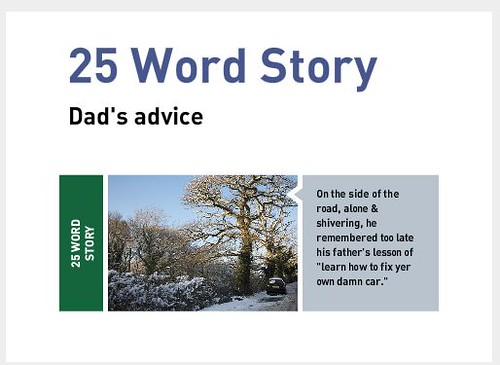Each weekend, over at our iAnthology network for National Writing Project teachers, Bonnie or I or a volunteer post a writing prompt. It’s always sort of a challenge to find an idea that will engage as many of the close to 400 members as possible (on average, about two dozen folks will contribute to a prompt each week).
Yesterday morning, I was trying to come up with an idea when I got a link shared to me by Ira Socol, who was responding to my post about 25 word stories. I loved the poems he shared, which are structured poems. I didn’t see a name of the style, so I called it X by X (X being the number of lines and then X being the number of words per line).
The response has been pretty wonderful, and I have been using Cinch to record audio responses to everyone’s poems, giving some voice to my reactions to their writing. I love the simplicity of Cinch and how easy it is to embed into our site. And since it a site where geographic distance is everything, having a voice connected to your writing gives it a certain power of response, I think.
Here are the poems that I wrote and shared:
2×2
Coffee cup
filled, steaming
3×3
Dog walking, cold
fingers, cold toes,
silent morning frost
4×4
Four balls bouncing loudly
against the garage floors
echo like a shotgun —
can’t take it anymore
5×5
Lying here in the silence
of the night, no movement
in the house, save me,
and my own restless thoughts
6×6
The smiling face is silently mocking
the reason why I am crouched
on the floor, with my youngest.
I hold the plastic action hero
in the air, as if fighting,
when what I desire is peace.
7×7
“Seven” is what I said when asked
what is my favorite and magical number.
We sit, elbows touching, at the table
where his fingers hold a crumbling cookie
of fortune and mystical numbers of chance.
I expect the next question: “Why seven?
but it never comes; only quiet munching.
And here is my podcast, via Cinch:
Peace (in the Sunday poems),
Kevin
PS – If you are a Writing Project teacher looking for a supportive space for writing, drop me a comment and I will invite you into the iAnthology network.


